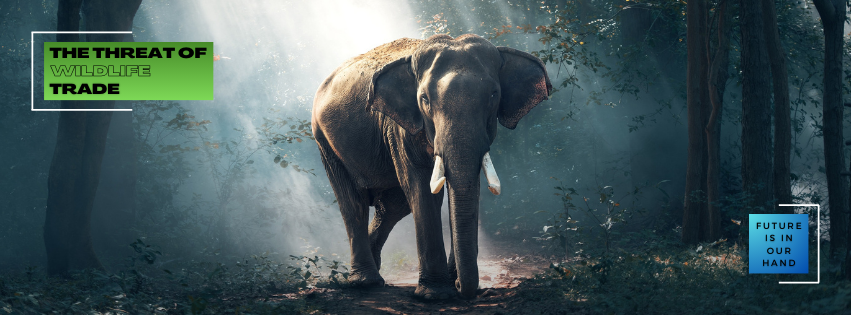
The threat of wildlife trade in AML
Tigers, white rhinos, leopards, African elephants, and orangutans- seen by many as majestic and charming animals. Many of us admire them and try to capture their beauty with many of these animals at risk of extinction. Unfortunately, not everyone has such pure intentions. Trade in wild animals is becoming an increasingly popular way to launder money.
What is wildlife trade?
Trade in wild fauna and flora is being increasingly recognized as both a specialized area of organized crime and a serious threat to many species of plants and animals.
Wildlife trade is the trade in non-domesticated animals or plants, usually extracted from their natural environment or bred in controlled conditions, as both live and dead animals for their body parts.
Illegal trade in wildlife is any crime related to the environment that includes illegal smuggling, poaching, trading and the capture and collection of endangered species or protected wild animals.
The basis of the illegal trade in wild fauna and flora is primarily from the strong and rapidly growing demand for all kinds of products around the world such as fur which has various purposes. This ranges from coats to traditional costumes and trophies; bushmeat; exotic animals; ingredients of traditional Chinese medicine; jewellery and accessories such as chess sets.
How big is the scale of this problem?
Wildlife trade not only threatens the local ecosystem, but also puts all species under additional time pressure when they already face such threats as pollution, overfishing, dredging, deforestation and other forms of habitat destruction.
Unreported and unregulated trade in the fishing industry is estimated at approximately USD 4.2 to 9.5 billion annually. The illegal timber trade is estimated at approximately USD 7 billion annually. The next number is even more shocking, $8-10 billion per year. This is the estimated figure for wildlife trade.
When these numbers are combined, the entire illegal wildlife trade is the fourth largest illegal trade in the world, after drugs, humans, and counterfeit products.
In most cases, wildlife trafficking is based on the same international criminal networks that deal with drug and human trafficking. In this way, they diversify their income.
Fight against wildlife trade
Corruption, ineffective laws, a weak judicial system, and short sentences allow large criminal networks to continue targeting wildlife regardless of the consequences. It is these factors that have made the illegal wildlife trade a low-risk business with huge profits. It is often the case that poor local poachers are caught while large crime rings remain elusive. This has promoted a level of safety and encourages crime rings to carry out further attacks.
This is why we should focus on fighting the trade in wild fauna and flora by breaking down the individual aspects of this practice. This can be tackled through:
- Trade - Uncovering and closing key points and routes used for trade, such as ivory or other illegal products.
- Buying – initiatives that change consumer behaviour and reduce demand for illegal wildlife products should be promoted.
- Poaching - supporting ranger teams and local communities who risk their lives to protect rhinos, tigers, and other wild animals from poachers.
- Governments - pressuring governments to improve and enforce their laws to help end the illegal wildlife trade.
Conclusion
As the human population grows, so does the demand for wildlife. People in many countries are accustomed to lifestyles that drive the demand for wildlife. They expect access to various types of seafood, leather products, wood, medicinal ingredients, and textiles. On the other hand, there is also extreme poverty, which means that some people treat wildlife as a valuable barter for trade.
Due to how huge a threat the trade in wild fauna and flora is today, we need to find and support organizations that do everything in their power to stop criminals from further destroying our ecosystem.







